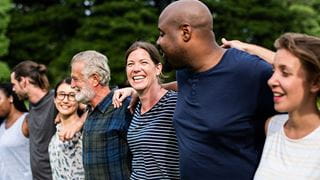Understanding Child Sexual Exploitation
As a society, we all share the responsibility of safeguarding children from harm and being taken advantage of by others. This means understanding the different ways that young adults and children can be exploited, and what can be done to combat this.
Sadly, an NSPCC study estimated that roughly 1 in 20 children in the UK have been sexually abused, with many children between the ages of 11 and 17 reporting experiences matching the legal definition of sexual abuse at some point in their childhood. This statistic highlights the frequency that sexual abuse can occur, and the unfortunate truth is that in some cases, this isn’t an isolated incident.
In this article, we explain the forms of child sexual exploitation which can occur, how to spot the signs and patterns, and what you can do as part of your responsibility for safeguarding children and young people from sexual exploitation.
What is Child Sexual Exploitation?
Child sexual exploitation (CSE) is the methodical and systematic sexual abuse of minors. It involves exploiting young people by giving them things like gifts and money, or tricking them into believing that they are in a loving relationship, in return for sexual activity.
CSE is one of the most extreme instances of child abuse which can occur. It may take place in a grooming relationship or may be part of wider trafficking activity, where groups of children or teenagers are moved around and exploited into performing sexual acts, often with multiple people.
Anyone who works with children or interacts with children on a professional basis has a responsibility to help prevent child sexual exploitation. This involves knowing the different types of exploitation that may occur, sexual exploitation signs and symptoms, and how to report concerns about CSE.
Types of Child Sexual Exploitation
Child sexual exploitation can happen both in person or online, with abusers gaining the trust of a child or controlling them through blackmail or threats of violence. This can then lead to sexual abuse within a short amount of time, depending on the abuser and their intentions.
In-person child sexual abuse will involve a child being manipulated or coerced into sexual activity in person, either with the perpetrator or someone else. In some cases, young people are invited to parties or events, given drugs and alcohol, and then persuaded or forced into performing sexual acts.
Child sexual exploitation sometimes takes place as part of gang activity, where gangs force young people into sexual activity to exert power and control over them, as a kind of initiation, or to use sexual violence as a weapon. These cases usually involve multiple abusers, and drugs or alcohol may be used to make the victims compliant.
If a child is sexually exploited online, they can be pressured to send sexually explicit images or videos of themselves to an abuser or have sexual conversations about topics that no child should be exposed to. These pieces of explicit media are then potentially used to further blackmail a victim and gain more control over them, leading to threats if the victim doesn’t take part in other sexual activities.
Gangs may also use online CSE to gain access to images of a young person that are then circulated between members or used to manipulate the victims.
How to Spot Signs of Child Sexual Exploitation
Knowing the indicators of child sexual exploitation can help uncover instances of CSE early on and get victims the support they need. However, it can be difficult to spot, especially if victims are actively trying to prevent people from finding out.
Some signs of sexual abuse or grooming can be:
- Being scared or frightened of certain people, places or situations
- Dramatic mood shifts or changes
- Inappropriate behaviour, specifically overtly sexual
- Misuse of alcohol or drugs
- Physical signs such as bruising or bleeding, specifically around genital areas
- Pregnancy or symptoms of pregnancy
- Secretive behaviour
- Symptoms of sexually transmitted diseases
- Unexplained money or gifts which they won’t discuss
Child sexual abuse isn’t limited by age or gender, although the NSPCC study highlighted that girls do typically experience a higher rate of sexual abuse, with the 15-17 age group suffering the worst level of abuse. Additional signs of child sexual exploitation you might notice could include:
- A drastic change in appearance, such as weight-loss
- Involvement with older groups of friends
- Hanging out with other vulnerable people or antisocial groups
- Taking part in criminal activities (drug dealing, stealing, etc.)
- Staying out late or unexplained absences
- Self-harm indicators
- Having a much older romantic partner
None of these signs in isolation necessarily means that a child is being sexually exploited, but it is always worth noting a single point of behaviour in case further signs arise. The earlier you can recognise sexual exploitation, the sooner you can help put a stop to it.
Remaining honest and open will help vulnerable children to potentially confide in you, especially if they feel they have no one to turn to.
The Importance of Understanding CSE
Having a better understanding of child sexual exploitation means that you are better positioned to help those who may be experiencing it. Some victims are likely to know they’re being exploited but may have been isolated from trusted adults by their abusers, so if you spot definite signs of abuse it is worth raising concerns.
A study by the Office of National Statistics highlighted that child sexual abuse was most likely to have been perpetrated by a friend or acquaintance of the child, which can be a key factor in preventing a child from raising concerns.
Undertaking proper safeguarding training will allow you to get a full grasp of your role in relation to safeguarding vulnerable children and young adults, including your responsibilities around raising concerns, intervening and contacting the relevant authorities. Take a look at all of our available safeguarding courses to see what kinds of topics we cover.
If a child does talk to you about sexual exploitation they’re experiencing, then it’s vital that you listen to them carefully and highlight that they’ve done the right thing by telling you. By taking anything they say seriously and explaining what you’ll do next, you will make them feel heard and potentially help them to reveal further details which could help your report to the proper authorities.
If you work in a school or social care, there will be a designated safeguarding lead or officer that you can go to with reports of the sexual exploitation of children. They will then be able to contact relevant local authorities to launch a proper investigation into the claims and take action to keep the child safe.
If a child confides in you about sexual abuse and you believe that they are in imminent danger, you should call the police and report your concerns.
FAQs
What are the 3 stages of child exploitation?
The three stages of child exploitation are recruitment, control and exploitation. Recruitment involves the perpetrator finding a victim and making contact, control involves them building a relationship with the victim that they can exploit, and exploitation is the actual abuse where the perpetrator uses coercion or manipulation to get what they want.
What is the sexual exploitation of a child?
The sexual exploitation of a child involves a perpetrator manipulating a young person to perform sexual acts, either in person or online. It’s a serious form of child abuse and is often a part of child trafficking or gang activity.
What is the most common form of child exploitation?
Sexual exploitation and forced labour are the two most common forms of child exploitation. In both cases, a child’s body is controlled by a perpetrator to perform activities, usually against their will, for the perpetrator’s enjoyment or gain.
Summary
The sexual exploitation of young people and children is a grim reality that is faced by many in the UK, and therefore is something that safeguarding professionals need to be aware of in order to wipe it out. Spotting the signs and demonstrating that the children you interact with can trust and talk to you are key responsibilities in safeguarding children and young people from sexual exploitation and some of the best ways to ensure that CSE is spotted early and stopped.
If you’re looking for more advice on stopping child sexual exploitation, we cover this topic in a lot more detail in our ‘Child and Adult Sexual Exploitation’ online training course, covering all the information you need to know in order to provide vulnerable children with the right safeguarding measures.









/safer-recruitment.jpg?mw=320&hash=A2BB5E144C89C295EC10C63680F69F39C4C3E566)




/e-safety-.jpg?mw=320&hash=A9FCF6B70F32AD3EA74633373FF0213B000F75FF)










































